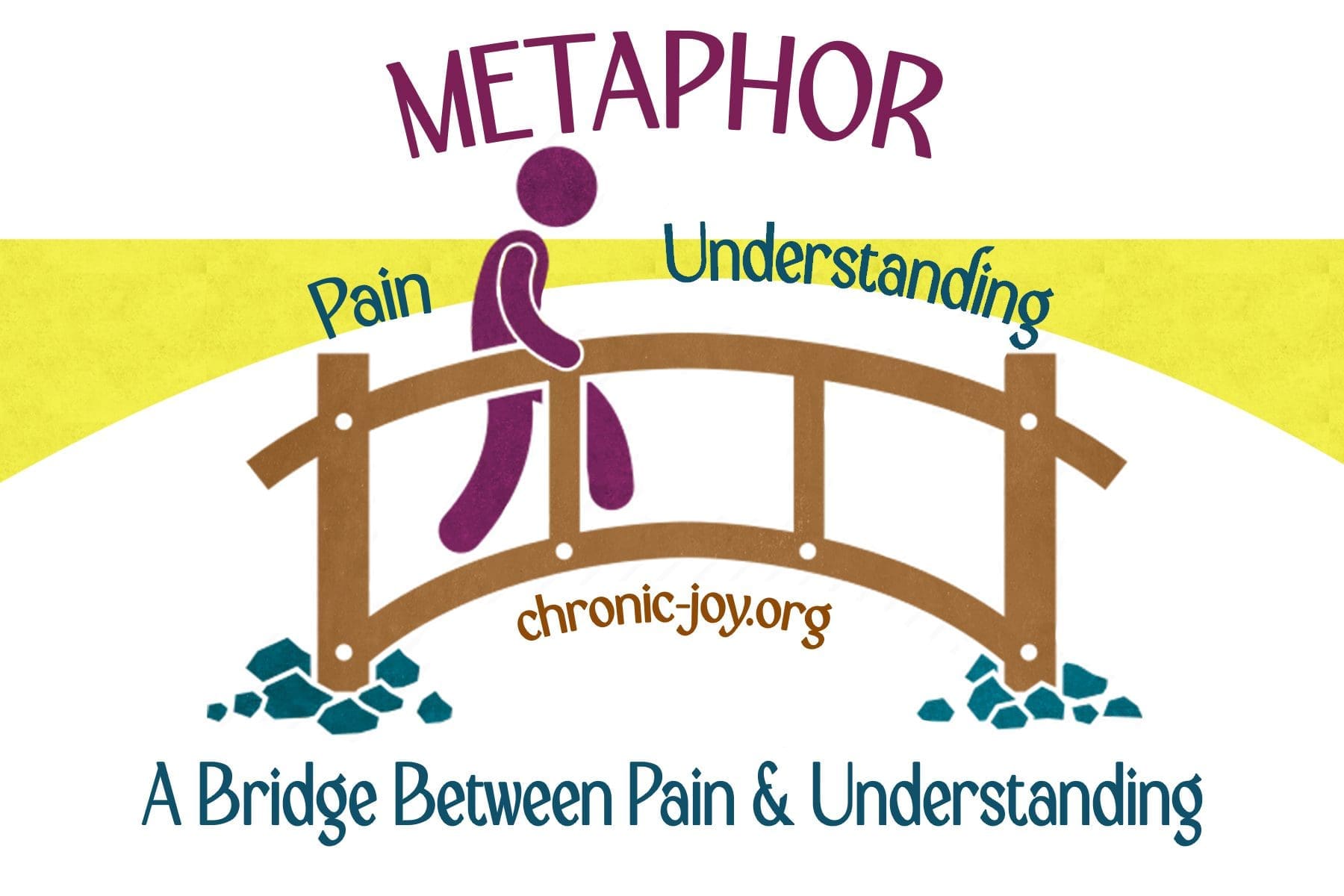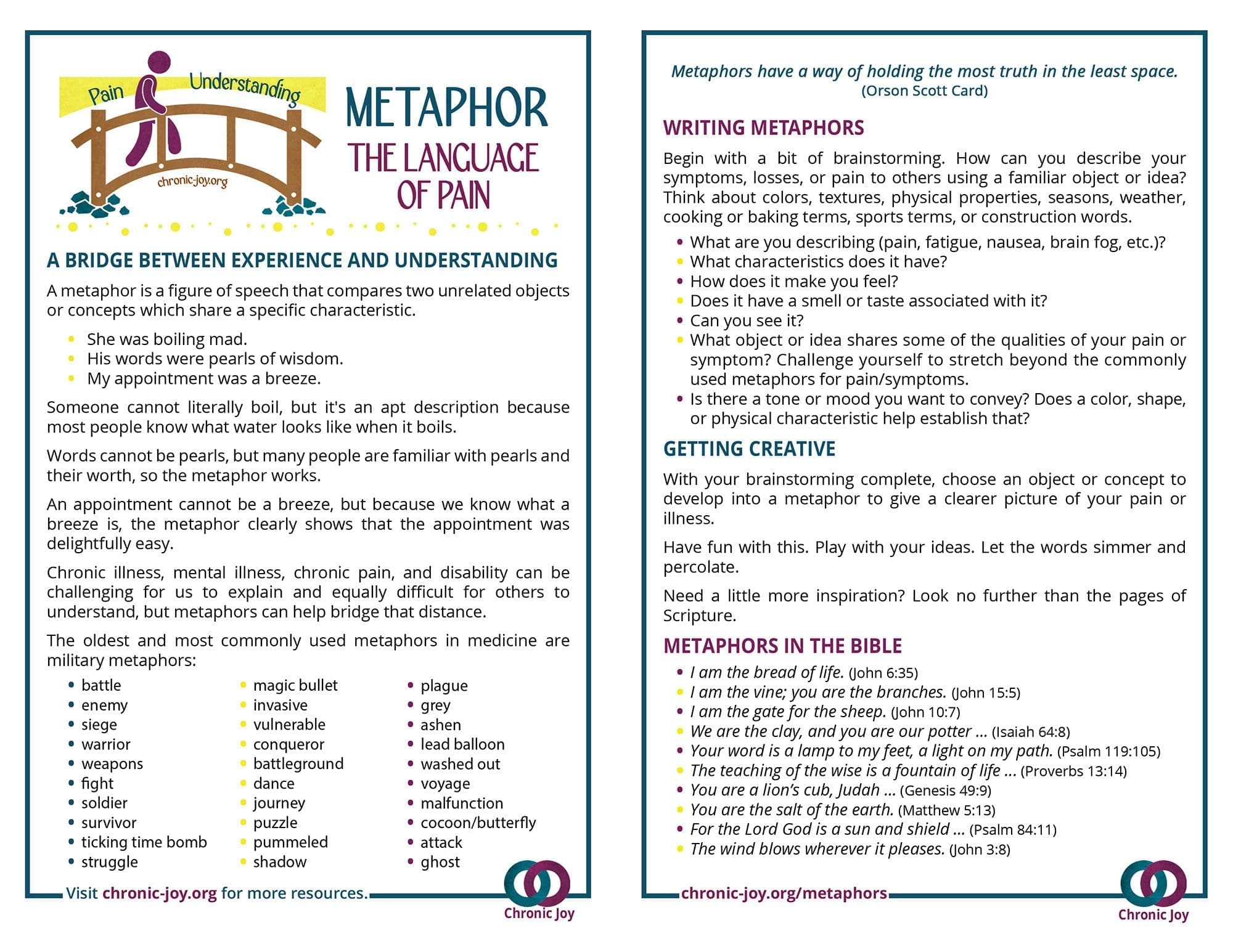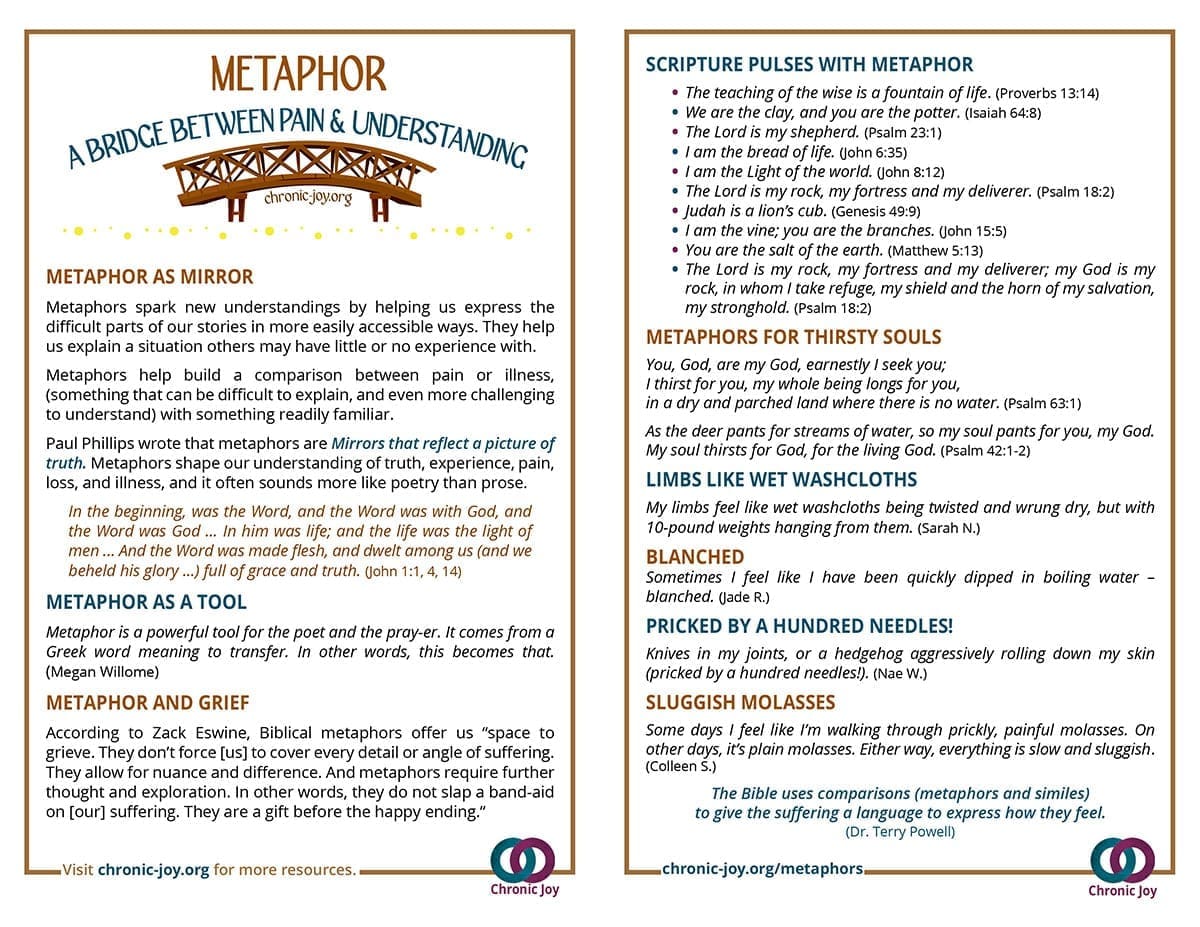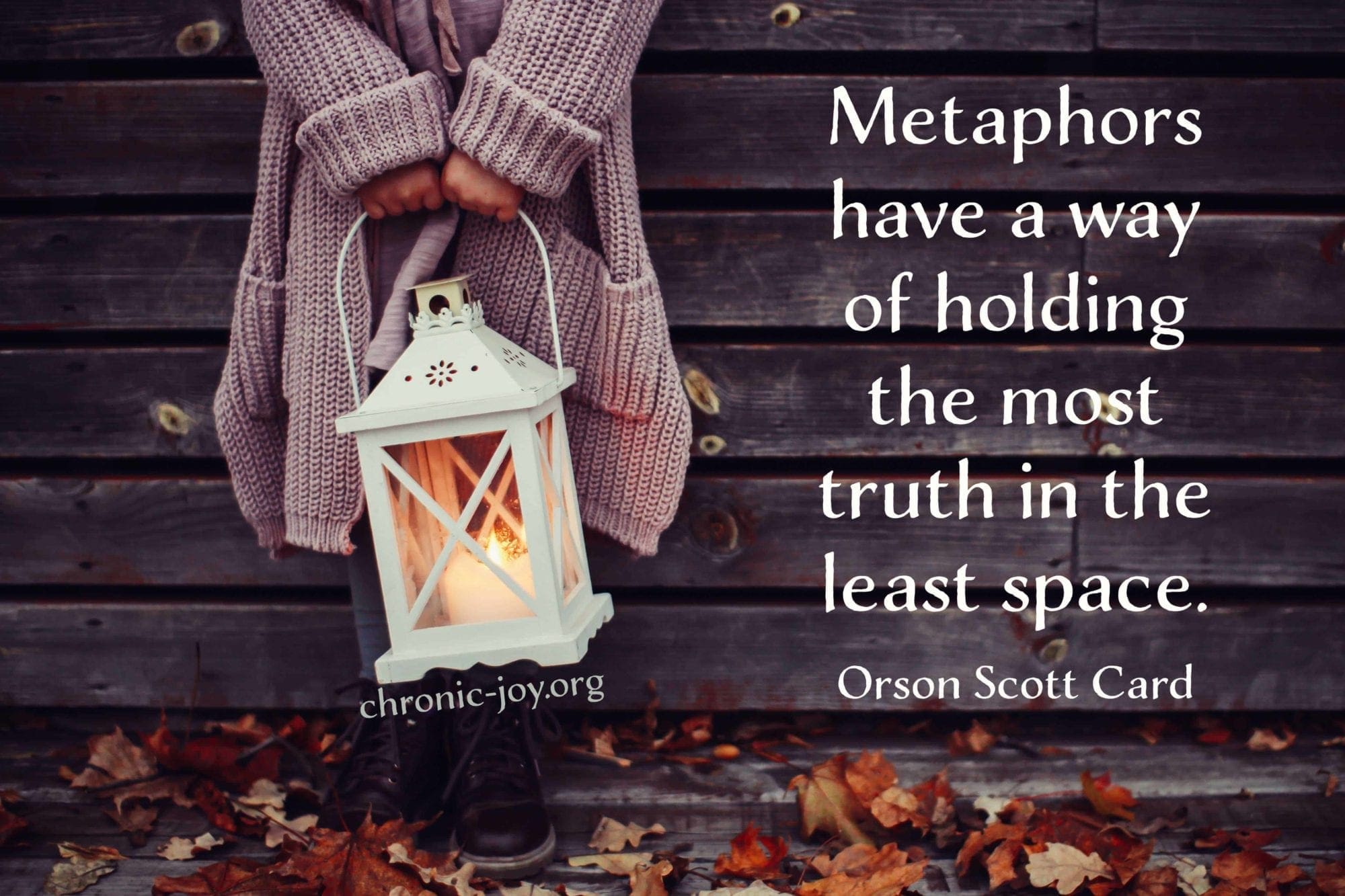
Metaphors
A Bridge Between Pain & Understanding
Describing pain to someone who hasn’t experienced it is often challenging. Using metaphors can bridge the chasm, reframe our thoughts, and invite deeper understanding.
METAPHORS
For the word of God is alive and active. Sharper than any double-edged sword, it penetrates even to dividing soul and spirit, joints and marrow; it judges the thoughts and attitudes of the heart. (Hebrews 4:12)
“The Bible uses comparisons (metaphors and similes) to give the suffering a language to express how they feel.” (Dr. Terry Powell)
Metaphors can spark new understanding and better express the complicated parts of our stories in more easily accessible ways, helping us explain situations others may know nothing about.
Pain resists both language and silence, incapacitates language, and demands expression. It destroys, and it invents.
“… people in pain are often highly creative in expressing their suffering …” (Joanna Bourke)
Scripture provides rich narratives of suffering from Job to Jonah, Jeremiah, and the Psalms.
Biblical metaphors offer us “space to grieve. They don’t force [us] to cover every detail or angle of suffering. They allow for nuance and difference. And metaphors require further thought and exploration.” (Zack Eswine)
Metaphors do not just describe pain; they illuminate it, inviting us to explore the enormity of pain or a single poignant moment.
In all its different forms, “Pain is both absolutely unique and infinitely shareable.” (Joanna Bourke)
How do we answer the question, “How are you today?”
Writing our pain into metaphors gives us a tool to describe our pain to someone who hasn’t experienced it, and most importantly, metaphor helps us to reframe our pain.
PAIN CAN:
- sear
- boil
- burn
- stab
- crack
- grind
- pierce
- churn
- pound
- throb
- bite
- itch
- fester
- chafe
- gnaw
- twinge
- sting
- ache
- be blood red
- jet black
- opaque gray
- be a bully
- be deep grief
“What we see of pain is inadequate to what we know …” (Anne Boyer)
PAIN HAS AN ELEMENT OF BLANK
(Emily Dickinson, 1924)
Pain has an element of blank;
It cannot recollect
When it began, or if there was
A time when it was not.
It has no future but itself,
Its infinite realms contain
It’s past, enlightened to perceive
New periods of pain.
- What spoke to or surprised you in Emily Dickinson’s experience of pain?
- Is her experience similar or different from yours?
- Do her words change how you think about the experience of being in pain?
METAPHOR WRITING PROMPT
- Focus on one pain sensation.
- Describe it using a metaphor.
- Explore the pain from all angles through the metaphor. As we write our pain (or part of our pain) into metaphor, we build an Ebenezer (a stone of remembrance) to have a touchstone when the pain flares again. We have been to this place before.
- When asked, “How are you today?” we will have an answer. We can share our metaphor with others, diminishing our isolation and loneliness.
- We might even glimpse God’s soul-ascending humor tucked into the shadows.
EXAMPLES OF PAIN METAPHORS
“… it probably doesn’t mean much to say …. [t]hat my brain feels inflamed. Instead, I might describe it this way: ‘My brain feels like an overripe peach, bruised and delicate, its juices threatening to seep out my ears.’ (Julie Rehmeyer)
“Writing about illness helped me to see and acknowledge the way in which pain had woven itself through my days, and I think seeing my reality on the page—and then working with it, reflecting at a distance—helped me to develop more compassion and understanding for myself.” (Sonya Huber)
METAPHOR PRINTABLES

Metaphor • The Language of Pain
Chronic illness, mental illness, chronic pain, and disability can be challenging for us to explain and equally difficult for others to understand, but metaphors can help bridge that distance.

Metaphor • A Bridge Between Pain & Understanding
Metaphors spark new understandings by helping us express the difficult parts of our stories in more easily accessible ways. They help us explain a situation others may have little or no experience with.

POSTS
Sciatica and Metaphor: A Way to Process Pain
For the past few weeks, I have been dealing with sciatic pain – sometimes mild and sometimes excruciating. I had a hard time describing it to others. The Chronic Joy printable, Metaphor: The Language of Pain caught my eye. I thought to myself, Wow, that’s just what I need!
Make Me Poems – Metaphor for Poetry and Prayer
Abigail Carroll said these are poems of lament. In writing these “Make Me” poems, she began to lean into metaphor, changing not only how she wrote but also how she prayed.





